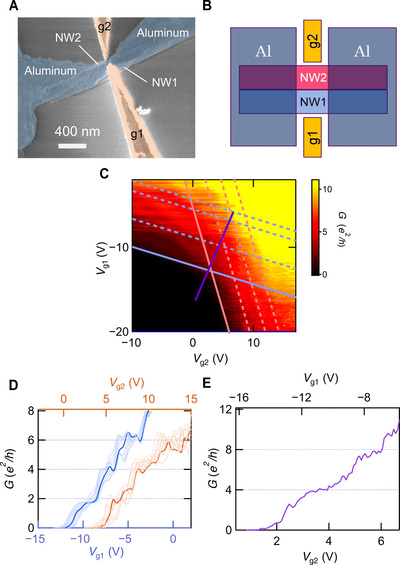Authors
Kento Ueda, Sadashige Matsuo, Hiroshi Kamata, Shoji Baba, Yosuke Sato, Yusuke Takeshige, Kan Li, Sören Jeppesen, Lars Samuelson, Hongqi Xu, and Seigo Tarucha
Abstract
Cooper pair splitting (CPS) can induce nonlocal correlation between two normal conductors that are coupled to a superconductor. CPS in a double one-dimensional electron gas is an appropriate platform for extracting a large number of entangled electron pairs and is one of the key ingredients for engineering Majorana fermions with no magnetic field. In this study, we investigated CPS by using a Josephson junction of a gate-tunable ballistic InAs double nanowire. The measured switching current into the two nanowires is significantly larger than the sum of the switching current into the respective nanowires, indicating that interwire superconductivity is dominant compared with intrawire superconductivity. From its dependence on the number of propagating channels in the nanowires, the observed CPS is assigned to one-dimensional electron-electron interaction. Our results will pave the way for the utilization of one-dimensional electron-electron interaction to reveal the physics of high-efficiency CPS and to engineer Majorana fermions in double nanowire systems via CPS.

Science Advances:https://advances.sciencemag.org/content/5/10/eaaw2194?rss=1